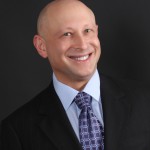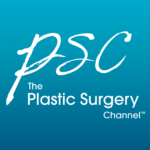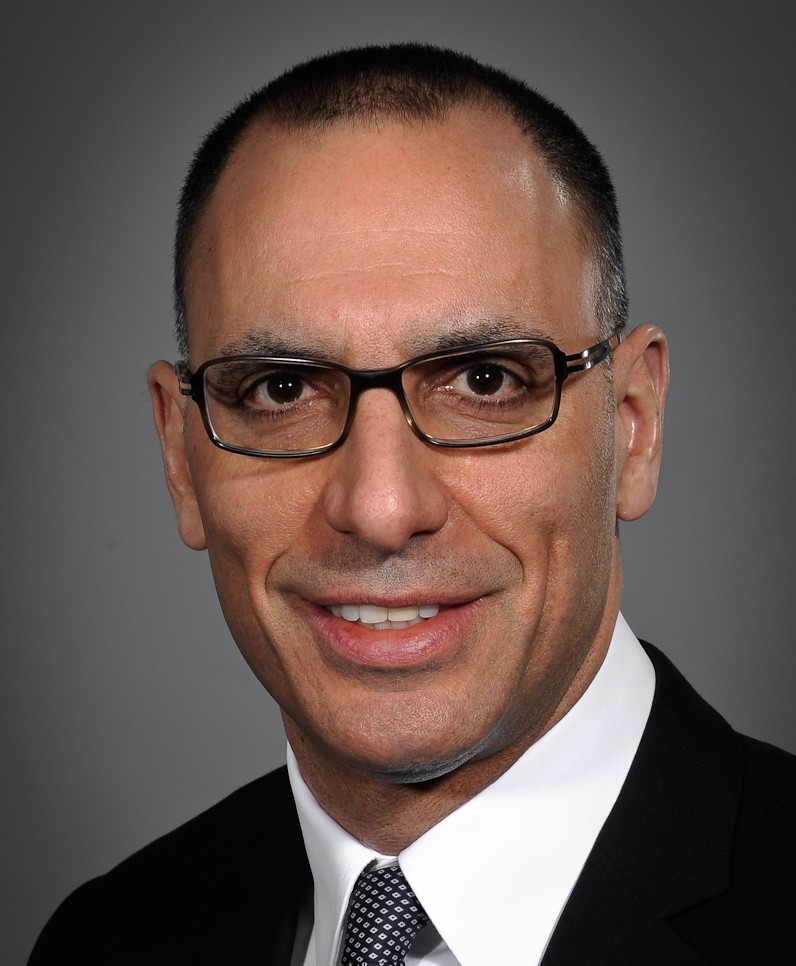Women have historically gotten the lion’s share of attention when it comes to plastic surgery, but times are changing. Over the past decade, there has been a huge jump in the number of men seeking out aesthetic procedures. While men tend to prefer to address their aging or body contouring issues with a non-surgical procedure, they are open to surgery when warranted.
Is plastic surgery different for men? Dr. Bruce Van Natta of Indianapolis, IN is joined by his colleagues Dr. Jason Pozner of Boca Raton, FL and Dr. Doug Steinbrech of New York City to discuss what men are looking to achieve? What is a “masculine” look? And does it differ by region?
Plastic Surgery for Men is on the Rise
According to the latest statistics from the American Society of Plastic Surgeons (ASPS), there has been a 29% increase in the number of men seeking cosmetic procedures. If you break that down into surgical versus non-surgical and minimally-invasive procedures, the latter number jumped a whopping 72%.
All of which is to say that while men have embraced plastic surgery, they do prefer to address their facial aging and body contouring issues non-surgically whenever possible. The most popular non-surgical procedures for men are:
- Botox
- fillers
- non-surgical fat reduction, such as CoolSculpting
- laser hair removal
- chemical peel
- tattoo removal
In general, men have less tolerance for downtime and “fuss.” Most importantly, they never want anyone else to know that they had something done. Many male plastic surgery patients would rather commit to multiple non-surgical treatments and have to wait for their end results than opt for surgery.
Natural is the Aim with Men and Plastic Surgery
The important thing for men across the country is that they never want to look “done.” In South Florida, where Dr. Pozner practices, it’s all about the Marlboro man. Guys, including himself, imagine themselves on the horse with the hat. It’s one of the ultimate masculine ideals.
“Guys today want to look natural,” says Dr. Steinbrech. For his patients, the Marlboro man is an ideal, along with the guy on the outside of the Brawny paper towel package. It’s about looking rugged; men don’t want to erase all of their lines. They want to look younger, but they never want the work to be noticeable. “In my office in New York, 85% of my patients are men,” explains Dr. Steinbrech.
Who is the Typical Male Patient?
For Dr. Pozner, men make up about 15% of his practice. They tend to fall into two groups. In the first group, the wives drag their men into the office because “[they are] looking good and he’s not looking good and let’s fix him up,” he shares. The second group is men who’ve just sold their companies. “They want to chase girls and they want to look young.”
The most common surgical procedures in his practice are:
- facelift
- neck lift
- liposuction
- eyelids
“[Men] want to look better, but they don’t want to go into witness protection,” explains Dr. Pozner. They just want to look natural and more youthful.
Plastic Surgery Helps Men Stay Competitive in the Workplace
In Dr. Steinbrech’s office, he also sees a third group of male patients who want to “stay competitive in the board room.” Like it or not, we live in an ageist society. Now that many men are retiring later, it means that they are often interacting and/or competing with younger colleagues. Looking more youthful makes men feel more vital and confident. This, in turn, translates to the work place. Again, however, whether they’re in a close board room, city sidewalk or crowded bar, men never want anyone else to know that they had some “work.”
Daddy Do Overs
As an expert in plastic surgery for men, Dr. Steinbrech performs a lot of body sculpting to the abdominals. This is probably the number one problem area for men. He’s also helped popularize the name, the “Daddy Do Over,” the male version of the Mommy Makeover. It’s a combination of procedures to address the main aging issues on the male body.
In his Daddy Do Over, Dr. Stenbreach liposuctions away the bad fat that no one wants around the middle, and then places this fat into areas of the body that often loose volume with age, typically the shoulders, pecs and traps, to really make them pop. He may also remove a pinch of skin from the eyelids and treat the neck.
Brad Pitt Has Still Got It
While men may want their work to be totally invisible, “[they still] want to look like a movie star,” says Dr. Steinbrech. In Dr. Pozner’s practice, Brad Pitt’s jaw is a favorite. That big, angled jaw is still considered the ultimate in masculinity. Dr. Pozner uses the filler Radiesse to the chin and jaw to get that really sculpted look. It’s a quick, easy way to take years off the face.
“It’s good to know that there’s hope for old guys like me!” says Dr. Van Natta.
Click to add a comment
PSC Roundtable
November 22, 2019



The world of plastic surgery has expanded in a large way thanks to the introduction of non-surgical modalities. From the wrinkle-removing Botox, facial fillers, laser resurfacing, and even just plain ole (but medical grade!) skin care, more patients are entering practice doors than ever before with a hope of avoiding surgery but still achieving real rejuvenation.
While Botox really is a miracle compound (the number of annual injections eclipses all others, surgical or not), some of the non-surgical devices’ results aren’t as straightforward. Things like laser treatments work and work well, but there is one section of rejuvenation that isn’t so easily done without surgery: skin tightening. Traditionally the problem solved by a facelift, skin tightening is a hard goal to accomplish without a scalpel. Even so, a number of devices have been on the market for a handful of years and do show promise.
On this PSC Round Table, board certified plastic surgeons Dr. Peter B. Fodor of Beverly Hills, Dr. Stafford Broumand of New York City, and Dr. Steven Camp of Fort Worth discuss the problems with tightening skin without surgery, and whether any devices truly can offer one of the greatest ways to achieve rejuvenation.
What is Unique About Skin Tightening?
When looking at other non-surgical devices, all of the successful options work because they only affect certain layers of the skin, and usually near the top. For example, Botox, technically known as a neurotoxin, works by “freezing” the facial muscles that cause common wrinkles. Inject Botox, stun the muscle, and the wrinkles “go away” because the muscles aren’t making the face that caused them. While it doesn’t eliminate wrinkles, it does make them seem invisible because they’re no longer being activated.
Likewise, fillers are compounds injected at different levels of the skin to plump them up. Think of an aging area of the face, such as under the eyes, and you’ll notice that the aging is because volume has been lost there. A gaunt look isn’t because the face is falling, it’s because the volume that was once underneath has faded. Fillers simply add that volume back to give the skin that plump, robust look that is associated with a young face.
The various laser treatments available also only work on certain layers of the skin, the top layers. The “heavier” the laser, the deeper it penetrates, causing the top layers to turn over cells and rejuvenate the skin. They work wonderfully well to restore luster and even skin tones.
These three examples, again, are only working on specific parts of the facial skin. The issue with skin tightening is all of the skin layers need to be addressed. One of the most common issues with age is jowling, or when skin begins to hang off of the jawline. The hanging skin is because it has stretched over time, further than during the first third of life. Imagine a brand new rubber band – it’s uniform and tight. When you stretch it, it springs right back to it’s original shape. However, once that rubber band has been stretched hundreds of times, it becomes loose and “bigger.”
This is exactly what happens with aging facial skin, and traditionally the only answer was to remove some of it via a facelift to get back to that original sized rubber band.
What Can Be Done Without Surgery?
Plastic surgeons will tell you that one of the most powerful surgical procedures in their arsenal is the facelift. The reason is because it completely solves the skin tightening issue. The excess skin that either hangs off or bunches up on the face is surgically taken off and thus the skin is tightened, with incisions hidden in various locations depending on the amount of skin removed. As powerful as it is, patients are very weary of a facelift because it is requires some measure of downtime, involves scars, and, ultimately, is kind of scary because it involves our most precious feature, the face. Many, however, are very interested in the idea of achieving similar results without surgery.
This is where non-surgical options come into play. No matter the device, there is a unifying concept among them: utilize energy, or heat, to shrink the skin back into place. One of the most common examples of this concept is when a piece of meat is cooked on a hot pan or grill. The meat will immediately begin to shrink some when the intense heat of a pan works its way inside. This is exactly what non-surgical skin tightening devices hope to do, albeit at much lower temperatures to avoid cooking the skin!
A number of devices exist and all utilize differing forms of that energy. Some utilize ultrasound, others radiofrequency, and some use one or the other along with minimally-invasive probes and/or microneedles to get that energy deeper into the skin layers. While the concept is sound, results are nowhere near what can be accomplished with a scalpel in the OR. Still, the treatments get better by the day, and significant results are possible.
Checking Patient Expectations
While these non-surgical skin tightening devices are out and achieving results, they aren’t achieving facelift results. Board certified plastic surgeons like Dr. Camp are hesitant to put too much stock in these devices because of their average results. And, while they may not achieve what a facelift might, that doesn’t mean they are useless either. “My concern is, patients are going to gravitate towards these technologies and think they’re going to get everything done,” warns Dr. Camp. “I think it’s the combination that might be the key.”
Ultimately, plastic surgeons are physicians first and are always looking to achieve what is best for their patients. If a patient wants and needs skin tightening that no non-surgical device can achieve, they will say a facelift is the only option. However, for those whose facial skin isn’t too aged, perhaps a treatment or two of a non-surgical device – often something that can be done easily in the office with minimal downtime – could bridge the gap between a young and an aged face. As long as patients check their expectations with what is possible without the operating room, the non-surgical skin tightening devices are a powerful new tool that can achieve results in the right patient.
Click to add a comment
PSC Roundtable
December 27, 2019



At The Plastic Surgery Channel, our goal is to help translate the immense amount of information and skill from board certified plastic surgeons to you, the patient. One of the growing concerns in the field is Breast Implant Illness, a disorder that hasn’t yet been scientifically identified but is real to many, many patients.
Before worrying about BII, or the scientifically identified, very rare cancer, BIA-ALCL, it’s important that patients realize going to the best will offer them the best. Board certified plastic surgeons who specialize in breast surgery are at the forefront of not only excellent results, but being extremely careful in the OR to best avoid minor to severe complications. If patients both educate themselves and work with an expert, the risks of surgery and complications are minimized and the results maximized.
On the latest PSC Round Table, three breast surgery experts, board certified plastic surgeons Dr. Richard Restifo of Connecticut, Dr. Anu Bajaj of Oklahoma, and Dr. Adam Hamawy of New Jersey detail how critical it is to see the best. Breast implant illness is absolutely a conversation they have with their patients during the consultation, and nothing is more important than a patient educated. After all, plastic surgeons are physicians first; the well-being and health of their patients is paramount.






































